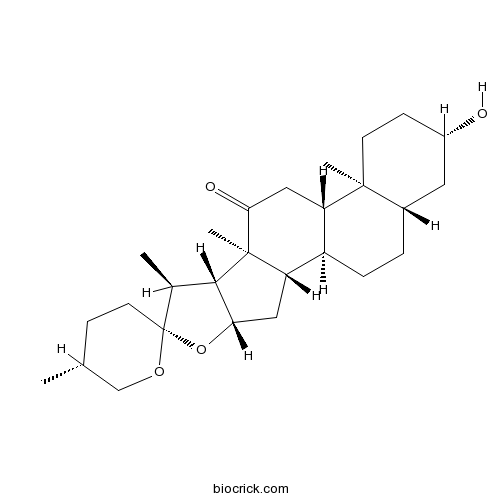Chlorophytum laxum
Chlorophytum laxum
1. The products in our compound library are selected from thousands of unique natural products; 2. It has the characteristics of diverse structure, diverse sources and wide coverage of activities; 3. Provide information on the activity of products from major journals, patents and research reports around the world, providing theoretical direction and research basis for further research and screening; 4. Free combination according to the type, source, target and disease of natural product; 5. The compound powder is placed in a covered tube and then discharged into a 10 x 10 cryostat; 6. Transport in ice pack or dry ice pack. Please store it at -20 °C as soon as possible after receiving the product, and use it as soon as possible after opening.
Natural products/compounds from Chlorophytum laxum
- Cat.No. Product Name CAS Number COA
-
BCN5408
Hecogenin467-55-0
Instructions

Phytoremediation of cadmium-polluted soil by Chlorophytum laxum combined with chitosan-immobilized cadmium-resistant bacteria.[Pubmed: 28667583]
This study examined the performance of the chitosan-immobilized cadmium-resistant bacteria Arthrobacter sp. and Micrococcus sp. on cadmium phytoremediation by Chlorophytum laxum in cadmium-polluted soil. These immobilized cadmium-resistant bacteria can survive in cadmium-contaminated soil and significantly increased soil cadmium solubility, but the ability of chitosan-immobilized cells to increase cadmium solubility was lower than that of free cells. A pot experiment demonstrated that chitosan-immobilized Micrococcus sp. promoted the growth of C. laxum planted in cadmium-contaminated soil. A significant increase in the cadmium concentration in the roots and aboveground parts of C. laxum was found in plants inoculated with free and chitosan-immobilized cells of these bacteria. The performance of Arthrobacter sp. free cells to augment cadmium accumulation in C. laxum was a little bit better than that of chitosan-immobilized Arthrobacter sp., except at 9 weeks after planting. The phytoextraction coefficient, bioaccumulation factor, and translocation factor of C. laxum inoculated with free and chitosan-immobilized cells of cadmium-resistant bacteria were higher than those of the uninoculated control and increased with time. Our findings suggest that chitosan-immobilized cells can be exploited to enhance the efficiency of cadmium phytoremediation by C. laxum.


